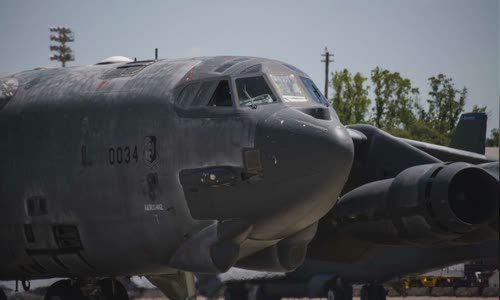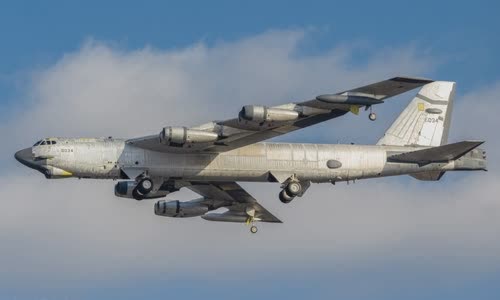It took the United States nearly two years to revive the 60-034 B-52H bomber to replace a plane destroyed in the 2016 crash.
B-52H bomber number 60-034 nicknamed "Wise Guy" (The Wise Guy) on December 14 made a 2.5-hour flight near Tinker airbase, marking the first time the B

The 60-034 landed at Barksdale base camp in May 2019 Photo: USAF
This is a modal window.
Beginning of dialog window.
End of dialog window.
The 60-034 was built in 1960 and was taken to the Aviation Maintenance and Recycling Air Force (AMARG) air cemetery (AMARG) number 309 at Davis Monthan Base, Arizona, for sealing in 2008, after
It was expected to be disintegrated to obtain components for B-52H bombers in service, but the US Air Force decided to revive 60-034 to replace a plane of the same type destroyed during takeoff at the base
The process of body structure inspection began in December 2018, ending 10 years of "screening" at the B-52's graveyard.
"There were cracks in the rear landing gear and the aircraft lacked two engines. The batteries, pipes and tires also needed to be replaced," said Colonel Robert Burgess, who drove the B-52 from cemetery to apartment.

The 60-034 test flight on December 18 Photo: Redhome Aviation
The plane's escape system also needs to be overhauled, so that the crew can safely leave the aircraft in an emergency.
After preliminary repairs were completed, technicians ran a series of tests with the engine, landing gear, fuel pipes and escape system to ensure the B-52H could take off.
Phase two lasted almost a year since the plane landed safely at Barksdale, with the goal of restoring performance to the aircraft.
PDM was conducted 48 months after operation with conventional B-52H.
Video shot near Tinker base last week shows the 60-034 fully restored and in flight testing.
Under the terms of the New Strategic Arms Reduction Treaty (New START) signed by the US and Russia in 2010, the two sides will limit the number of nuclear weapons systems on their payroll.
New START also allows the two countries to maintain large quantities of weapons in a sealed state, in order to replace those systems that have been damaged by accident.



 Imtiaz Uppal Imtiaz Uppal
Imtiaz Uppal Imtiaz Uppal







